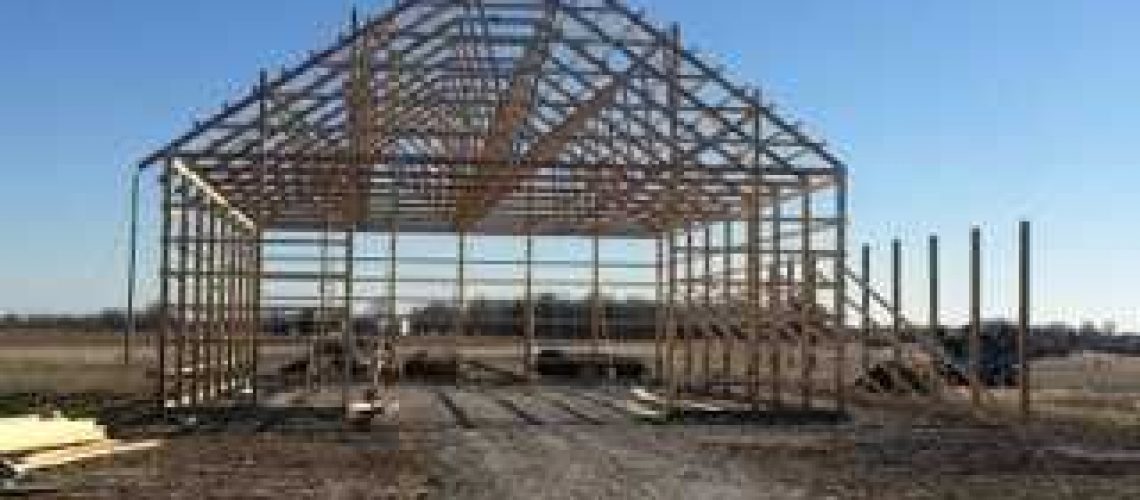Two main building methods exist for erecting buildings: post-frame and stick-frame. Stick-frame construction, which has effectively cornered the residential building market, requires a concrete foundation to build upon. Post-frame construction, by contrast, anchors its wall poles directly in the ground.
While this may seem like a relatively small difference, it can have significant ramifications on several factors, including a building’s size, its stability, and its overall cost. If you would like to learn more about the benefits of post-frame construction, keep reading. This article takes a closer look at three distinct advantages offered by post-frame buildings.
1. Greater Wall Height
With stick-frame construction, the wall studs of the house attach to the foundation by anchor bolts and/or steel straps. While this method may sound like an effective way to anchor a home, it actually places significant limitations on the maximum height of bearing walls.
According to the International Building Codes, conventional stick-frame walls cannot exceed 10 feet in height. For upper stories, therefore, a second set of wall studs must be attached to the second floor. While this limitation may not pose a huge problem for residential homes, many other types of buildings, such as barns and vehicle hangers, require tall walls and large, open interior spaces.
A post-frame building eschews concrete foundations as an attachment point. Instead, contractors anchor wall poles deep in the ground, then fill in the area around them using concrete. The incredible lateral stability of this method allows builders to construct walls as high as 20 — or even 30 — feet.
2. Larger Openings
Post-frame building has a long history as a method of constructing barns and other large farm and work-related structures. Such buildings often require especially wide openings in order for heavy machinery to move easily in and out. The close wall-stud spacing required by stick-frame building codes often makes it hard to build appropriately sized doorways.
Not only do post-frame buildings tend to create a greater degree of overall stability, but they can accommodate much wider openings as well. In fact, wall poles can be spaced out up to 12 feet apart from one another without negatively impacting the building’s overall stability. Such spacing makes it easy to create doors large enough to accommodate virtually any piece of equipment.
3. Quicker and Cheaper Construction
Stick-frame construction tends to be a much more time-consuming affair than post-frame construction. Much of this time goes into the creation of a concrete foundation — a process that requires excavating, leveling, and compacting the ground before you can even think of pouring the concrete.
In addition, the closer spacing of stick-frame walls increases the amount of time they take to construct. Simply put, there are many more pieces to attach. In addition to increasing the construction time, such factors also tend to inflate the overall costs of stick-frame buildings, which require both more materials and more workers as well.
Post-frame construction, by contrast, represents a highly streamlined process. To begin with, the building’s poles can be erected without the need for any foundation. As a result, contractors can begin constructing the building itself without the time or financial costs of creating a concrete foundation.
The increased spacing of post-frame walls means that they can be created much more quickly and with minimal material costs. In many cases, building a post-frame structure requires fewer workers as well — a fact that can go far in reducing the overall costs of the project.
As you can see, post-frame construction presents a wealth of attractive features. For more information about whether post-frame construction would be a suitable approach for your upcoming building needs, please contact the pros at O’Neil Building Systems.

